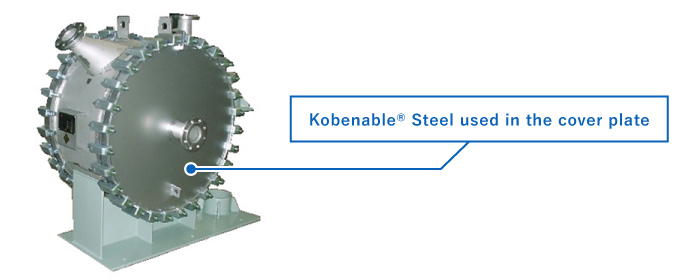March 29, 2024
Kobe Steel, Ltd.
Kobe Steel, Ltd. announces that its low-CO2 blast furnace steel product Kobenable® Steel has been adopted by NAKAJIMA & Co., Ltd. for its steel plates used in the spiral heat exchanger*1 for biomass power generation manufactured by Kurose Chemical Equipment Co., Ltd. Employed is Kobenable Premier, which reduces 100% of CO2 emissions in steel production based on the mass balance method*2.
Kobenable® Steel, developed by Kobe Steel based on its original CO2 reduction solution for blast furnace ironmaking,*3 is available for all types of steel products (steel sheets, steel plates, wire rods and bars) manufactured at the Company’s Kakogawa Works and Kobe Wire Rod & Bar Plant. In addition, since it maintains the same level of high quality as conventional products, customers can use low-CO2 blast furnace steel for products that require high quality, such as special steel wire rods and ultra-high-tensile strength steel, which are Kobe Steel’s specialties.
Kobe Steel Group, also known as the Kobelco Group, will contribute to a green society by providing low-CO2 blast furnace steel to a wide range of fields, leveraging the comprehensive strengths of the Group, which operates diverse businesses. We will continue to work for providing solutions to the needs of society, aiming to offer value indispensable for our stakeholders on a continual basis by integrating its diverse businesses, technologies and human resources in a unique way.
*1 Spiral heat exchanger
A spiral heat exchanger is a type of heat exchanger in which two heat transfer plates are spirally wound around the core to form a pair of short flow passages. It can handle fluids containing fibrous solids, resist stains and clogs, and provide high heat transfer performance with low maintenance.

*2 Mass-balance method
Our green steel products using the mass-balance method comply with the Guidelines for Green Steel upon the Application of the Mass Balance Approach established by the Japan Iron and Steel Federation (JISF). Under this method, steelmakers have their CO2 emission reductions certified (receive a reduction certificate) and allocate these reductions to a certain portion of products, which are considered to be steel products with low CO2 emission intensity.
*3 Kobe Steel’s original CO2 reduction solution for blast furnace ironmaking
This technology, demonstrated at Kobe Steel’s production site Kakogawa Works, achieves a significant reduction of CO2 emissions from the blast furnace by charging into the blast furnace a large amount of hot briquetted iron (HBI) manufactured via the MIDREX® Process, a direct reduced ironmaking process, accounting for about 80% of the world’s natural gas-based direct reduced iron (DRI) production (60% of the world’s overall DRI production). It can reduce CO2 emissions in the blast furnace ironmaking process by 20–40%.

| Categories | CO2 reduction rate per ton (compared to 2018 levels) |
|---|---|
| Kobenable Premier | 100% |
| Kobenable Half | 50% |

(Note) The information on this web site is presented "as is." Product availability, organization, and other content may differ from the time the information was originally posted. Changes may take place without notice.